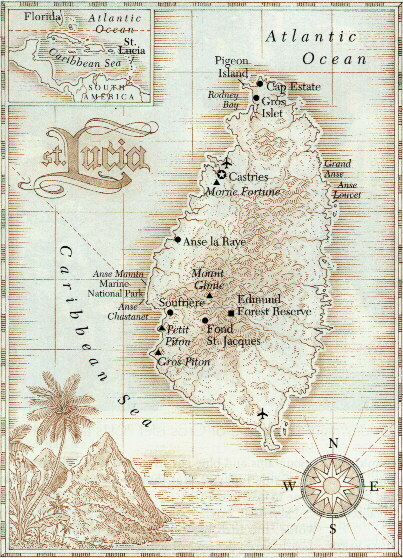

Lush and tropical St. Lucia demands to be explored to the fullest. There is one main road that circles the entire almond-shaped island, but drivers should be forewarned: Narrow roads, dogleg curves and hairpin turns demand complete attention. However, the chances of getting lost are slim indeed. Castries, the capital, is the main port and the largest city on the island. Morne Fortune ("Hill of Good Fortune") rises over the south side of the city; its winding road yields many sensational vistas of Castries and the harbor. Although Castries is a fairly modern city, there are numerous historic landmarks and colonial buildings decorated with graceful balconies and intricate latticework.
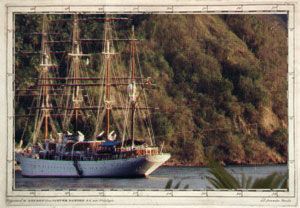 |
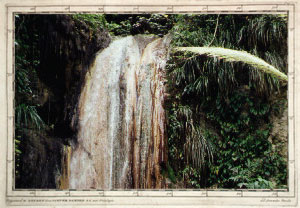 |
The area around Derek Walcott Square, the old center of town, is particularly scenic. The square, named after the St. Lucian winner of the Nobel Prize for Literature, spans half an acre of fenced land embellished with flowering trees and bushes, a fountain and an enormous 400-year-old saman tree.
Near the square sits the Cathedral of the Immaculate Conception. The church's interior is a splurge of color and inspired dignity; its murals are impressive. The National Library, a grand old building with stately columns and white trim, houses a collection of antique maps of the island and the Caribbean.
| The action in downtown Castries is centered around William Peter Boulevard, an oval-shaped three-block plaza lined with shops and office buildings. Another lively downtown spot is the Castries Market and Vendors Arcade.
A visit to the marketplace will provide a glimpse into the colorful character and culture of the St. Lucians. There are vendors with heaps of local fruits and vegetables and shoppers will find aromatic spices, decorative basketware, and other local items. |
The town of Soufrière is quite a contrast to Castries. Founded in 1746, it is engagingly out of step with modern times. Local fishermen still put out to sea from the sleepy port, casting their crudely made nets from the same kind of dugout canoes their ancestors used generations ago. The main square is surrounded by French colonial architecture; a little church facing the Caribbean dominates the plaza. Soufrière actually sits in what was once a volcanic crater.
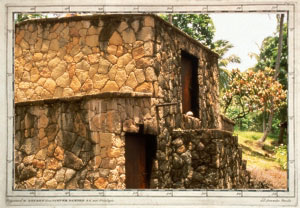 |
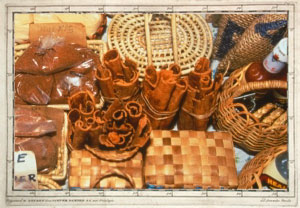 |
South of the city, the twin peaks called The Pitons loom on the horizon, dwarfing everything around them. The wider Gros Piton rises to 2,460 feet, and the narrower Petit Piton stands 2,619 feet above sea level.
Another of St. Lucia's attractions is Mount Soufrière, a dormant volcano near the town of Soufrière. It's known as the "drive-in" volcano because it is actually possible to drive into its crater. The natural sulfur springs are said to have therapeutic properties and people bathe in the waters.
Choiseul and Laborie are two eye-catching villages. A visit to Choiseul, a prominent center for local arts and crafts inspired by Carib Indian traditions, is a must for anyone fond of folk art. Laborie is a picturesque village of wooden colonial buildings.
At the southernmost point of St. Lucia is Vieux Fort, one of the island's oldest settlements and now the site of its international airport, Hewanorra International Airport. Its Indian name means "land where the iguana is found." Just beyond the town's French-colonial architecture and contemporary concrete-block houses lie miles of white-sand beaches fringed with palm trees.
The Rodney Bay Marina is located in a protected lagoon on the northwestern tip of St. Lucia. The 83-acre man-made lagoon was originally created by dredging swamplands. Currently serving as the host of the Atlantic Rally for Cruisers and of Europa, a round-the-world rally for cruisers, the marina is renowned as the largest and best-equipped yachting facility south of St. Thomas. In addition to providing sailors with state-of-the-art facilities, it also has an extensive shopping complex. Stores range from a chandlery and a marine electronics shop to fashion boutiques and a gourmet food store.
On the northeast side of the island is Marquis Plantation, which is still in use. Tours of the estate are offered, during which guides take visitors to see the copra shed, the old cocoa drying area, the sugar factory and the banana fields.

| The Maria Islands are just off the coast of Vieux Fort. They are a nature reserve famous for two endemic species of animals unknown anywhere else in the world: the harmless Couresse grass snake and the Maria Islands ground lizard. The islands are also a nesting site for several species of sea birds and turtles. Of interest to naturalists and wildlife photographers are the Fregate Islands, on the Atlantic side of St. Lucia. Another nature reserve, the small islands, hardly larger than rocks protruding from the sea, are where the region's frigate birds roost. They are also a habitat for the boa constrictor. There are few more exciting ways to view the splendid beauty of the island than by helicopter. Visitors can embark upon flights that loop around the northern and southern portions of the island, offering aerial panoramas that include the steaming cauldron of Soufriere and the emerald carpet of the National Rain Forest. |
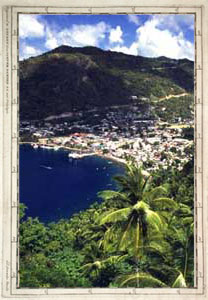 |
St. Lucia's warm clear waters and numerous spectacular reefs and marine life offer a perfect environment for both beginners and expert divers. Many hotels offer scuba diving facilities and snorkeling equipment and there are a number of independent dive centers offering short boat dives, night dives and a variety of scuba courses. The Anse Cochon and Anse Chastanet reefs and an old sunken ship are some of the underwater haunts waiting to be explored.
Introduction to St. Lucia
![]() Sightseeing
Sightseeing
![]() Activities in St. Lucia
Activities in St. Lucia
![]() Fast Facts
Fast Facts
![]() Travel Info
Travel Info
![]() St. Lucia Photo Gallery
St. Lucia Photo Gallery
![]() Contact Us
Contact Us
![]() LukeTravels.com Home
Page
LukeTravels.com Home
Page
![]() Air & Hotel Deals
Air & Hotel Deals
![]() Advertise Here
Advertise Here
COPYRIGHT 2009-2012 © LUKETRAVELS.COM ALL RIGHTS RESERVED - GO TO LUKETRAVELS.COM HOME - CONTACT US
